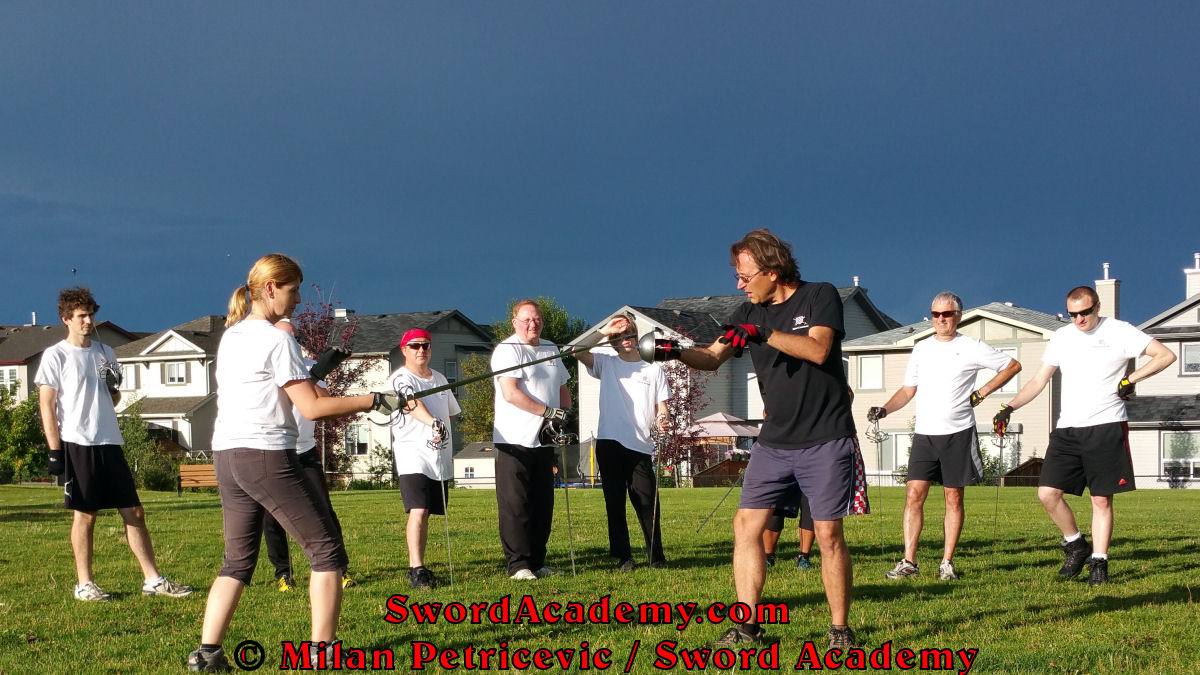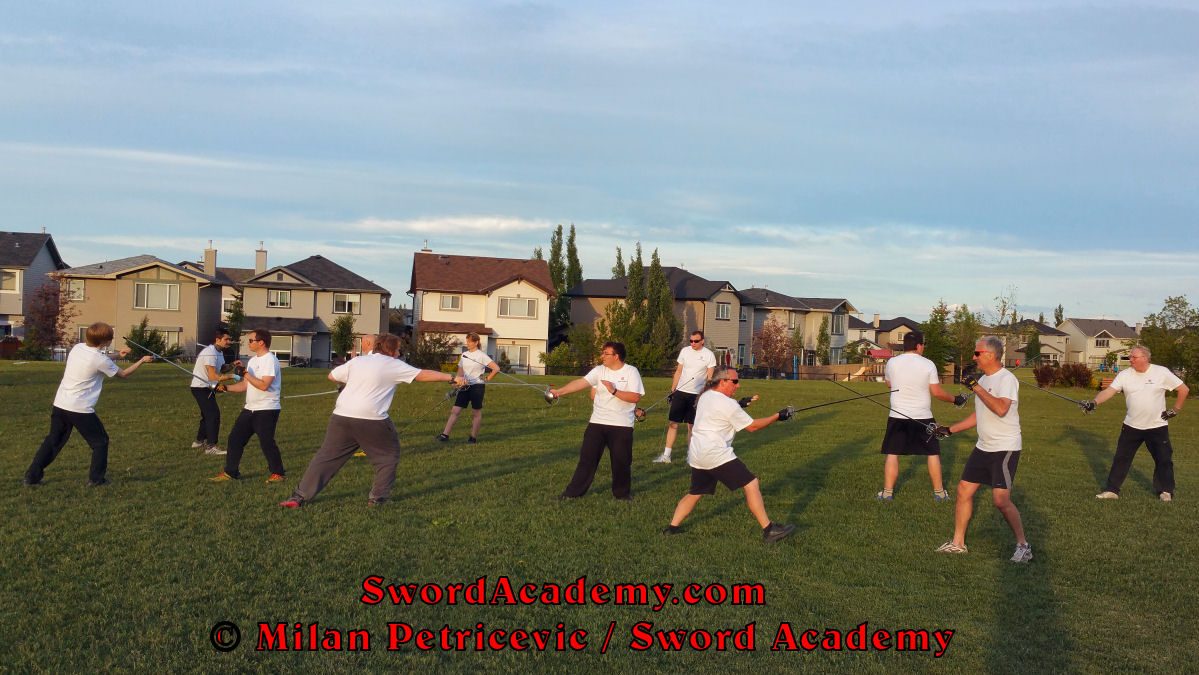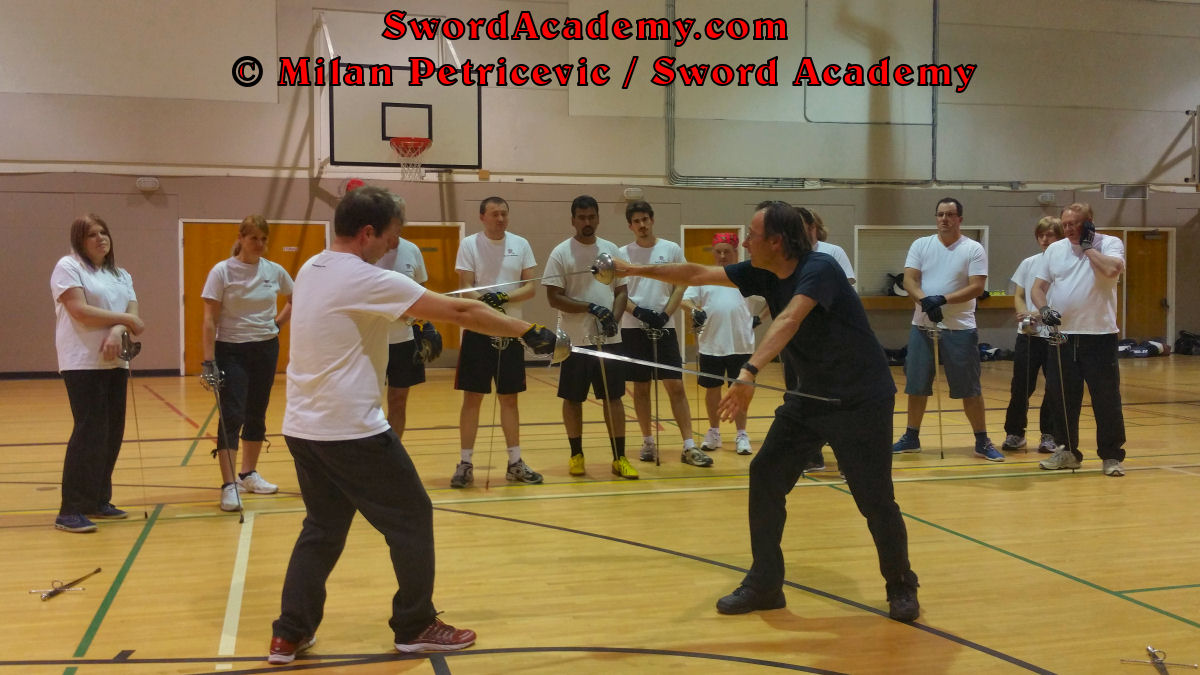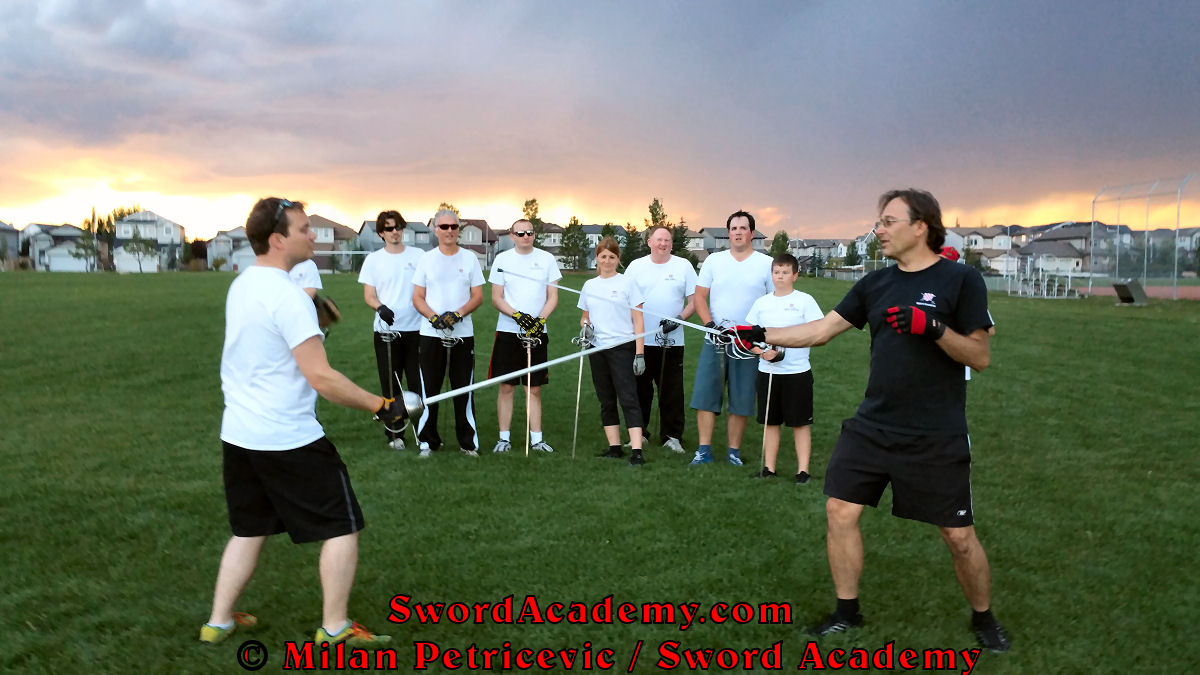Rapier

Rapier Usage and History
Rapiers were in common use throughout the Renaissance period and should be distinguished from the later small sword, renaissance cut-and-thrust sword and earlier estoc.
A rapier is primarily wielded with a single (dominant) hand, although it can be held in both hands in a manner similar to armored long sword for a close combat.
Rapiers are thrusting weapons, and if cuts are made they are often distracting cuts with the point aimed at the face – unlike cut-and-thrust sword which was better at delivering cuts due to a different blade design.
Unlike earlier forms of combat, where a single good cut would end the fight, a rapier thrust is not immediately disabling and combat often resulted in both parties taking injuries. Due to the puncturing nature of the wound and state of medicine in the period, death frequently occurred from blood loss or infection, hours or days later, rather than immediately from the actual wounds.
Contrary to popular belief, rapier combat was not always a gentleman’s affair. Kicks and punches were common and it frequently ended in grappling with both combatants drawing their daggers and stabbing each other to death. Historically, rapiers were often used in combination with a buckler or a dagger in the off hand. These bucklers often feature a prominent spike and come in a wider variety of shapes than the older bucklers used with a single-handed sword.
Rapier Components and Construction
A Rapier consists of a blade, quillons, a guard, a handle and a pommel.
The rapier blade is generally of such a shape that doesn’t lend itself to efficient cuts but has a sharpened point and often rigid profile. Sometimes intersection of the rapier is rectangular unable to deliver any cuts at all.
Quillons extend from the sides of the guard and are used mostly for binding and controlling the opponent’s blade. Guard styles are quite varied but fall into three main categories; cup, shell and cage. Rapier handles are held with one or two fingers wrapped over the guard and the thumb running along the length of the blade.
Training Tools
Wooden training tools are used by some practitioners. Rapier can be augmented by use of another tool in the other hands such as buckler or a parrying dagger.
Due to our philosophy (and its application to training) Sword Academy uses steel weapons exclusively in our Western Martial Arts (WMA) / Historical European Martial Arts (HEMA) curriculum as they have many benefits over wooden, synthetic or other materials.
In our curriculum Sword Academy studies renaissance techniques of rapier combat inspired by Italian, German, English and other sources.




